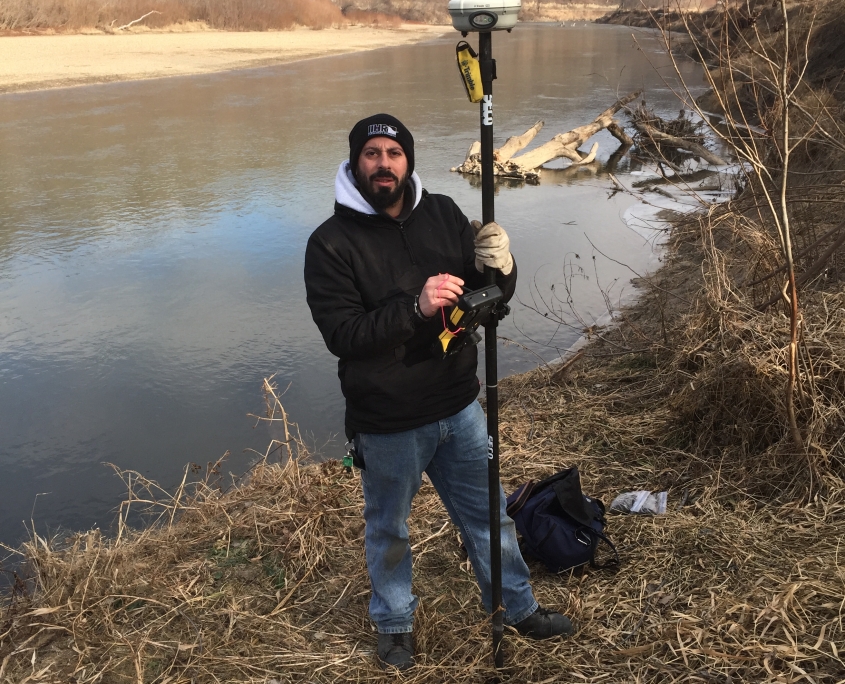Destined for the Water
Originally Posted on: April 9th, 2015
by Shianne Gruss
For IIHR graduate researcher Iordanis (Danny) Moustakidis, river mechanics is not only his passion, but also his namesake.
“There is a destiny here,” Moustakidis explains. The English to Greek translation of Iordanis—Jordan—connects him to the river that flows through the Middle East. “Since I was a kid growing up in Athens, every time we traveled with my parents, passing by a big river, I was fascinated by it.”
Originally interested in dams and dam construction, Moustakidis traveled to the United States to continue his academic career at Colorado State University in 2009, at the height of the nation’s dam deconstruction era. Since 1999, 725 dams have been removed nationwide to restore the free flow of rivers. Of the 75,000 dams in the U.S. Army Corps of Engineers database, 66,000 are located on rivers.
“I love and respect water,” Moustakidis says. While he continues to study and understand one of the four classical elements, he has since shifted his focus away from dams. Moustakidis left Colorado to finish his master’s in civil and environmental engineering at the University of Iowa, where he worked with Thanos Papanicolaou, developing radio-frequency identification (RFID) sensors to monitor and measure real-time bridge scour.
Now he is part of an interdisciplinary team at IIHR, working with the Iowa Nutrient Research Center at Iowa State University to couple river mechanics with nutrient studies. Moustakidis studies soil phosphorus at five sites associated with recent flood events in the Turkey River watershed. Soil phosphorus, a key element in most fertilizers, promotes plant growth, but it can also result in high levels of algae and reduced clarity in water bodies—with dramatic consequences to human and ecologic health. The goal of his research is to understand and determine the conditions under which the floodplains act as a source of phosphorus, or a sink, retaining soil phosphorus.
“It’s a new area, but very in demand, especially for agriculture-intensive states like Iowa,” Moustakidis says. “The results from this research could lead to improved or enhanced best management practices (BMPs) that have already been employed in the state.”
IIHR Director Larry Weber leads the INRC research at the University of Iowa; however, the center’s research involves many parties, including the Iowa Secretary of Agriculture, Iowa Department of Natural Resources, and the University of Northern Iowa. Its goal is to evaluate the performance of current and emerging nutrient management practices, and provide recommendations to further implement and develop those practices.
“If we want to extend our future to the next generations, we have to be extremely careful how we handle water.” Moustakidis remembers water shortages in Athens during the ’80s and ’90s, although he was never directly affected. “As an engineer, I am interested in preserving this good and making it available to all people.”




